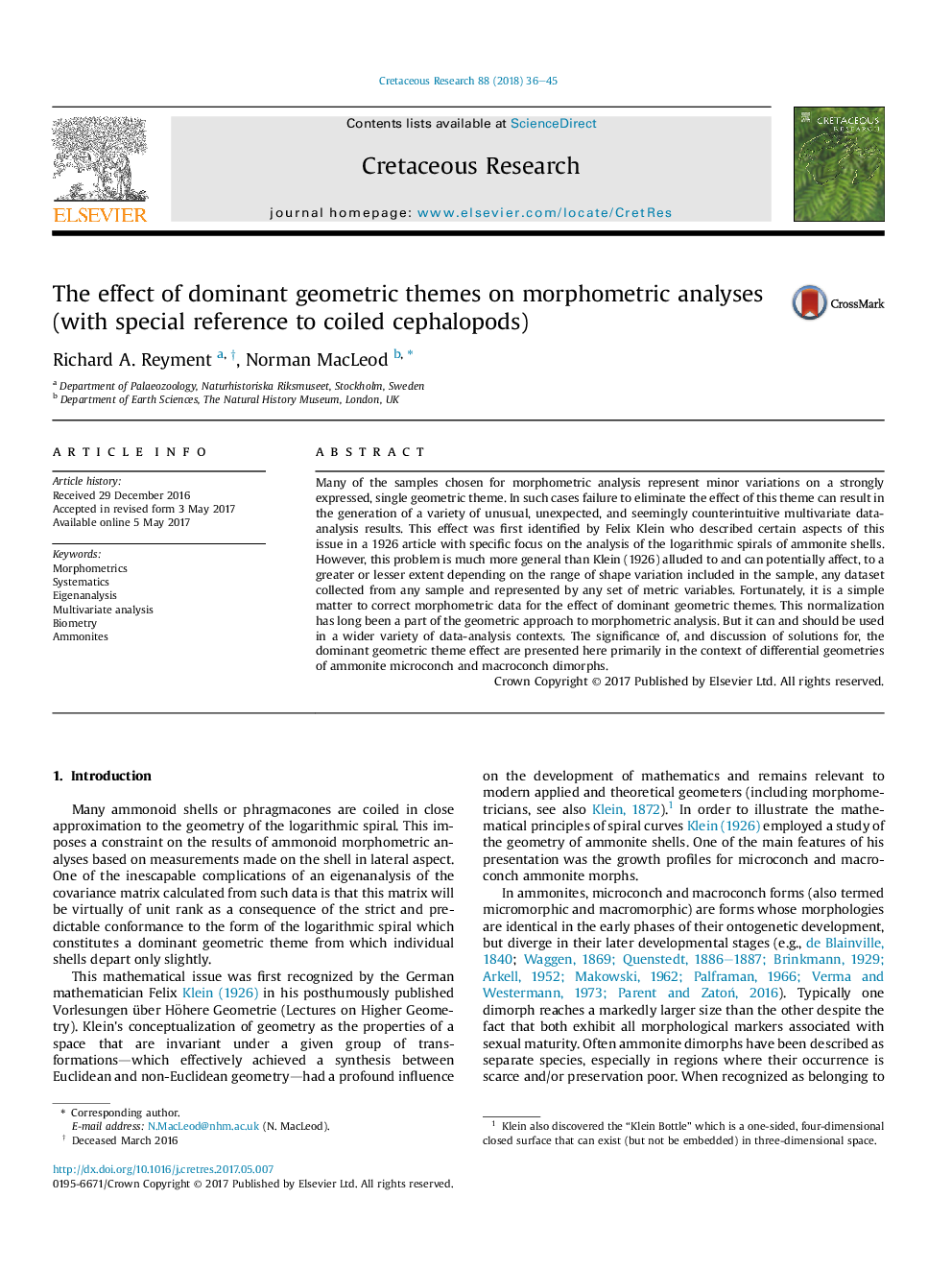| Article ID | Journal | Published Year | Pages | File Type |
|---|---|---|---|---|
| 8916250 | Cretaceous Research | 2018 | 10 Pages |
Abstract
Many of the samples chosen for morphometric analysis represent minor variations on a strongly expressed, single geometric theme. In such cases failure to eliminate the effect of this theme can result in the generation of a variety of unusual, unexpected, and seemingly counterintuitive multivariate data-analysis results. This effect was first identified by Felix Klein who described certain aspects of this issue in a 1926 article with specific focus on the analysis of the logarithmic spirals of ammonite shells. However, this problem is much more general than Klein (1926) alluded to and can potentially affect, to a greater or lesser extent depending on the range of shape variation included in the sample, any dataset collected from any sample and represented by any set of metric variables. Fortunately, it is a simple matter to correct morphometric data for the effect of dominant geometric themes. This normalization has long been a part of the geometric approach to morphometric analysis. But it can and should be used in a wider variety of data-analysis contexts. The significance of, and discussion of solutions for, the dominant geometric theme effect are presented here primarily in the context of differential geometries of ammonite microconch and macroconch dimorphs.
Related Topics
Physical Sciences and Engineering
Earth and Planetary Sciences
Palaeontology
Authors
Richard A. Reyment, Norman MacLeod,
